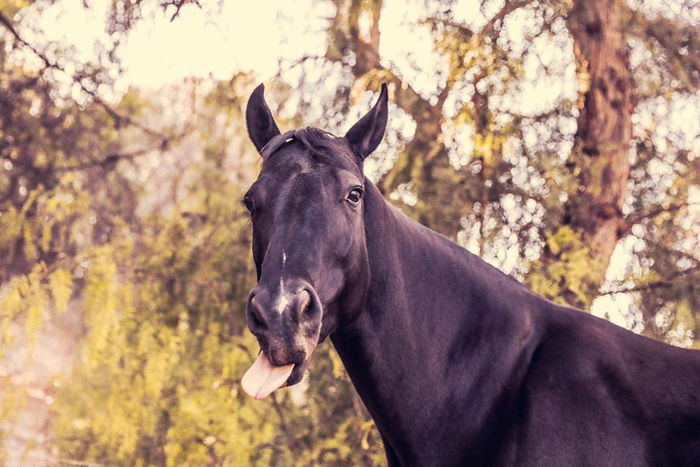15 Horse Photography Tips for Beautiful Photos
Horses are graceful and magnificent. They present unique challenges and opportunities for beginner and seasoned photographers. To truly capture the essence of these majestic creatures, you need a blend of technical skill and an understanding of their behavior.
Our article offers 15 essential tips for elevating horse photography. These tips will ensure your images are stunning and respectful of the subject.
[short_roundup products= “44126,50521,9406” title= “Recommended Cameras for Horse Photography” tag=” eproundupshort-20″]
15 Tips to Master Horse Photography
Here are our top 15 tips for taking beautiful horse photography images!
1. Develop Comfort and Confidence Around Horses
Intuitive creatures, like horses, pick up on our emotions. Our response to them affects their response to us. Remember that horses are prey animals. Horses react poorly if you act uncomfortable, fearful, nervous, or anxious. It is a biological response based on their nature.
Herding animals also rely on one another’s emotions to notice if a predator is around. So if you act threatening to a horse, it will get spooked. Likewise, a horse will sense if you are unsure of what you are doing or if you are not in control. It may misbehave or take advantage.
Understanding equine behavior is crucial for successful photography sessions. Horses are highly attuned to human emotions. So, being calm and confident is key to gaining their trust.
Spend time with horses before attempting to photograph them. Familiarize yourself with their nature and mannerisms. And seek guidance from experienced handlers or equestrians.
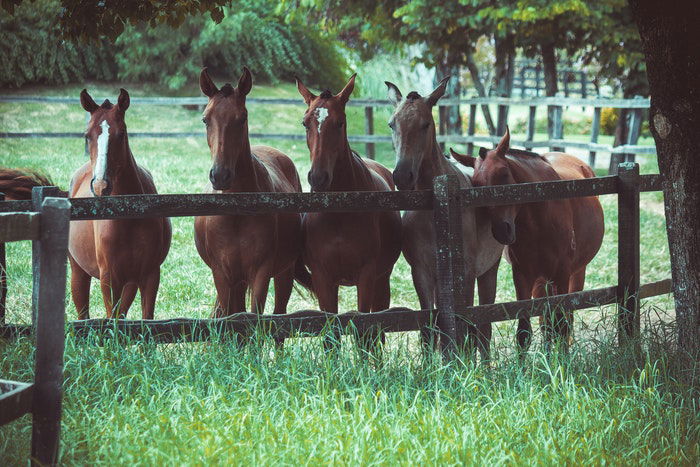
2. Prioritize Safety
Safety should always be paramount when photographing animals. Safety goes both ways. You must ensure that both you and the horse are protected. Respect the horse’s space and listen to the equine’s handler.
Ensure you follow the handler’s guidance, who will know their horse the best. Follow their directions, respect the horse’s space, and don’t cross boundaries. Horses can bite, kick, or trample when spooked, upset, or frustrated.
Along with paying heed to their handler, be attentive to the horse’s reaction to your behavior. No photograph is worth an upset animal. Our priority should always be the welfare and well-being of our subjects.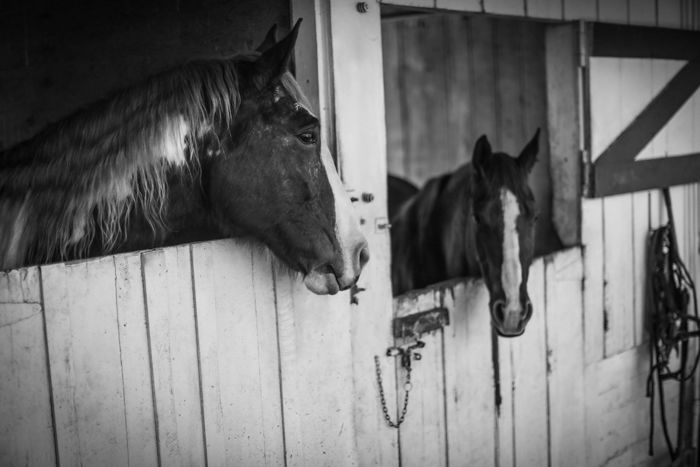
A good suggestion I use for my work is to arrive at a photo session early. It allows time for the horse to get to know us and our gear better. At the discretion of the horse’s owner, you can give the animal some treats and a happy rub and let them check out your camera!
Make a couple of shutter noises to gauge its reaction. If the horse feels anxious about the clicking, switch to a telephoto lens and photograph from a distance.
Observe the horse’s reactions to your presence and adjust your approach accordingly. It ensures a stress-free environment for both you and the animal.
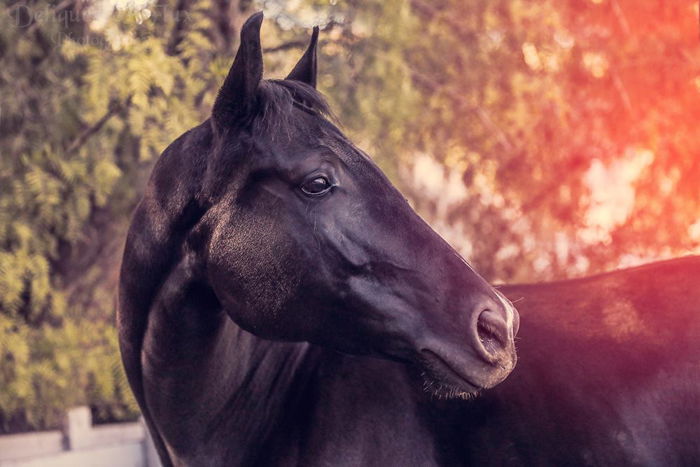
3. Choose the Right Lens
It’s important to select the appropriate camera and gear for horse photography. Opt for lenses that complement the horse’s proportions. Standard or telephoto lenses are best to avoid distortion.
The focus should be on realistically capturing the horse and its aesthetic. So, it’s best to steer clear of any distortion lens. That means no wide-angle or artistic lenses.
Of course, this tip is a guideline. I have taken some excellent wide-angle and fish-eye distorted photographs of horses. But the majority of this was not client work!
You’ll likely use standard lenses. This normal lens type produces an image roughly matching what the human eye sees, so the image looks natural to the viewer.
[short_roundup products= “23851,24307,23617” title= “Recommended Standard Lenses for Horse Photography” tag=” eproundupshort-20″]
Standard lenses have an angle of view of around 50 to 55 degrees diagonally. They also tend to have wide-open apertures, which makes them great for low light and shallow depth of field. A 50mm lens has an awesome standard focal length for horse photos.
Telephoto lenses are another must-have for your horse photography kit. They let you stand far back and not disturb the horse while taking pictures, and they are also useful for action photography.
Telephoto lenses produce a natural perspective free from the distortion caused by using a wide-angle lens. A popular telephoto lens is the 70-200mm.
Remember to use a filter to protect your lens from dust, and always carry a lens cloth to clean it. Stables tend to be quite dusty.
[short_roundup products= “23899,24296,23767” title= “Recommended Telephoto Lenses for Horse Photography” tag=” eproundupshort-20″]
4. Use Burst Mode and Continuous Focus
As much as horse photography gear matters, how you use it matters more! Much like photographing any animal, there are certain camera settings I find work great for equine photography.
Use burst mode and continuous focus settings to maximize your chances of capturing the perfect horse shot. These features are particularly useful for photographing horses in motion. They let you maintain focus and capture decisive moments with precision.
A continuous focus mode has different names depending on the camera brand. It is called AI Servo for Canon users, AF-C for Nikon users, and Continous AF for Sony users. It lets your camera follow your subject as it moves.
Horses blink, turn their heads, and move around at the most inopportune moment. The burst setting lets you take several photos while pressing the shutter. Burst is needed when horses get excited and start moving or running.
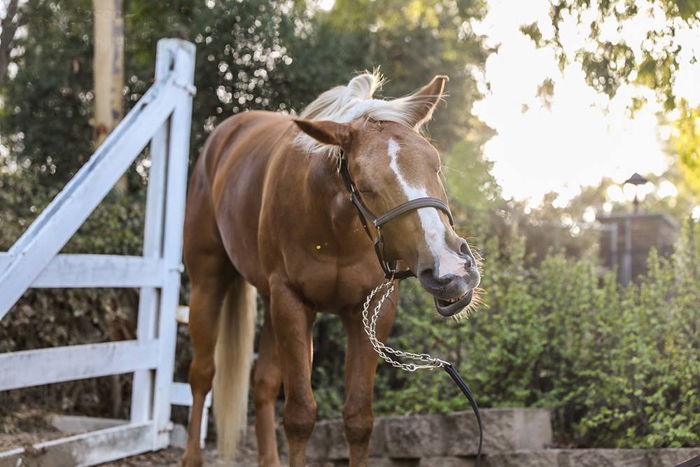
After you lock in the settings, technique comes into play. Remember that the goal is to keep the horse in a proper aesthetic perspective.
Try photographing from the equine’s eye level as much as possible. This perspective helps keep the body looking proportionate. Also, viewers are more empathetic to images taken from the same perspective as the subject.
If you photograph horses in action, panning is your best friend. Panning is moving your camera horizontally with the subject’s movement. You synchronize your camera movement with the subject moving parallel to you.
Ensure the shutter speed is above 1/2000 s to freeze that flowing mane! As for the compositional aspect, horses always show immense movement. Although a photograph freezes the moment, the viewer can still imagine the next subject’s next step.
When framing a horse you expect to move, leave enough negative space in front of their direction of movement. This anticipation ensures your subject doesn’t “bump into” the photo’s edge. If you crop the image with little space, you lessen the sense of the horse’s movement.
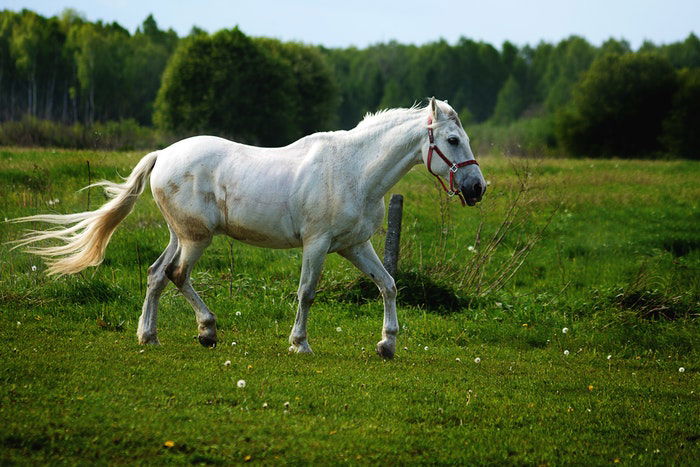
5. Minimize Flash Usage
Avoid using flash photography when possible, as it can startle horses and disrupt the natural ambiance. Always ask the horse’s owner or rider for permission before using a flash.
Some horses are used to flashes because of the competitions or photoshoots they attend. But many of them can get spooked by the sudden light.
It’s best to use natural light with horse photography, especially during the golden hours of sunrise and sunset. This lighting helps you achieve beautifully lit horse images without distressing them.
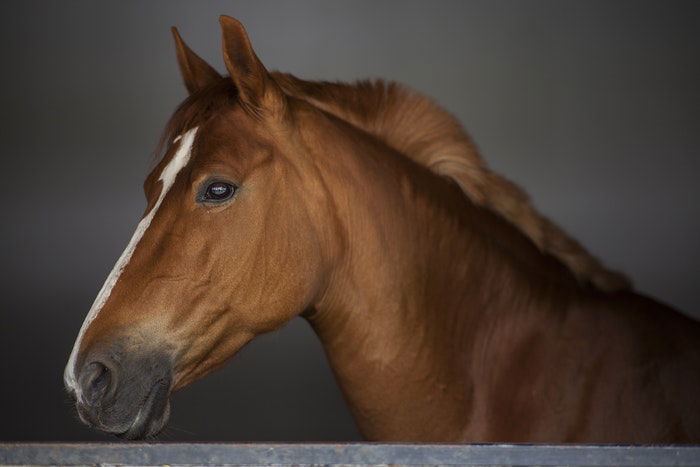
6. Embrace Detail Shots
Full-body horse portraits are captivating. But don’t overlook the beauty of close-up shots that highlight the intricate details of a horse’s features. An excellent trait of photography is to capture something that goes otherwise unnoticed.
Focus on elements like the eyes, ears, or harness. These close-up shots offer viewers a unique perspective. They showcase the horse’s character from a sometimes ignored perspective.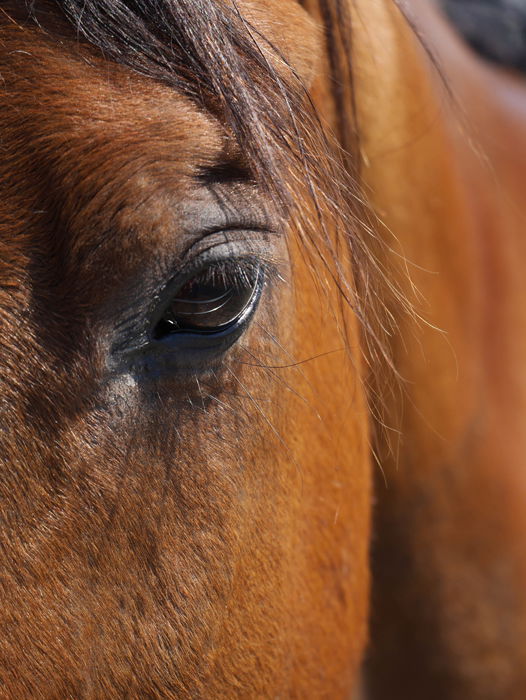
7. Choose Backgrounds Wisely
A fundamental tip for any photography niche is to be mindful of your background. If your background is too similar in color to your subject, your image will fall flat. The contrast between foreground, subject, and background creates interest.
Understandably, photographers cannot always control locations. For horse photographers, it is common to photograph within a barn or stables.
Not all horses are comfortable in new environments, and not all owners have trailers or live on large nature properties. In these situations, your adaptability and creativity come into play.
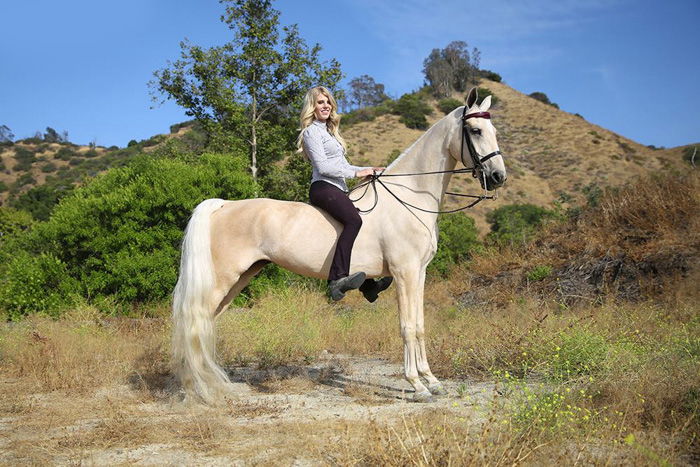
Find new and unique ways to work with the parameters given to you. Try a wide-open aperture to blur the background. Use post-processing techniques like Photoshop blur to separate the subject from the rest of the elements.
A good example would be photographing a dark brown horse within its shadowed stall. I suggest overexposing by a stop or two in low light. Adjust the richness of the colors in post-processing to separate the subject from the location.
So, pay attention to your background to ensure the horse stands out prominently. Experiment with different angles and aperture settings to separate the subject and surroundings. This approach improves visual interest and depth in your photos.
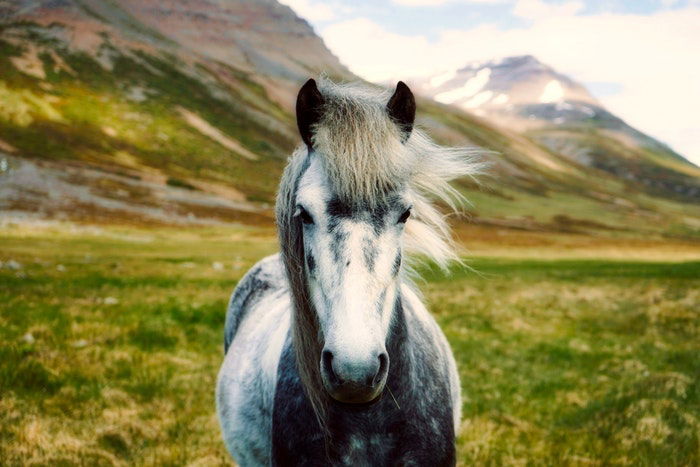
8. Accentuate Breed Characteristics
Understanding the specific traits of different horse breeds can inform your photography approach. Different horse breeds have different specifications.
This detail is particularly important if you want to step into the world of horse shows. Ask your client what breed of horse you will be photographing, and Google that breed.
This research will give you better insight into the horse’s characteristics and what to consider in your photo session. Whether photographing a spirited Arabian or a majestic thoroughbred, highlight unique attributes.
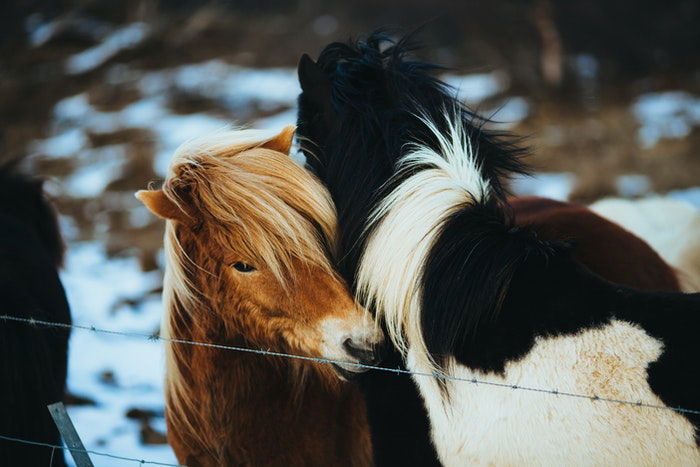
9. Capture Horses’ Ears Up
Snap photos of horses with their ears up. This posing is true for many types of animal photography, from dog portraits to wildlife. Ears up make the pet look alert, happy and engaged. With horses, many owners won’t use images with their horse’s ears down.
Ears forward on a horse compliment the composition of their heads and show the horse is confident. You can get a horse’s attention and raise those ears by rustling bags, snapping fingers, or using sounds from your smartphone. It’s that simple!
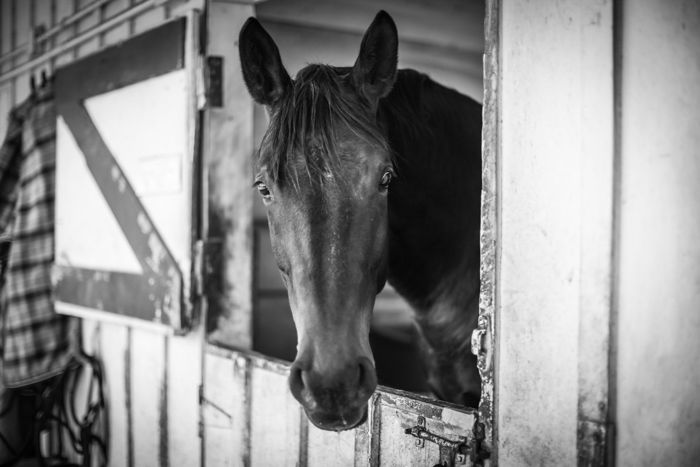
10. Emphasize Tension in Poses
Horses are known for their elongated necks and muscular physique. So, tension is the key to good portrait shots of horses. These horse poses create dynamic and visually striking compositions.
Try to have the horse bend or turn its neck so the animal appears more agile and elegant. The horse handler can use a treat to entice the horse to do this.
When posing a horse’s full body, having the horse bend or strain will bring those muscles to the forefront. This horse pose may take a bit of finagling, but the result is well worth it. It accentuates its muscular physique and natural elegance.
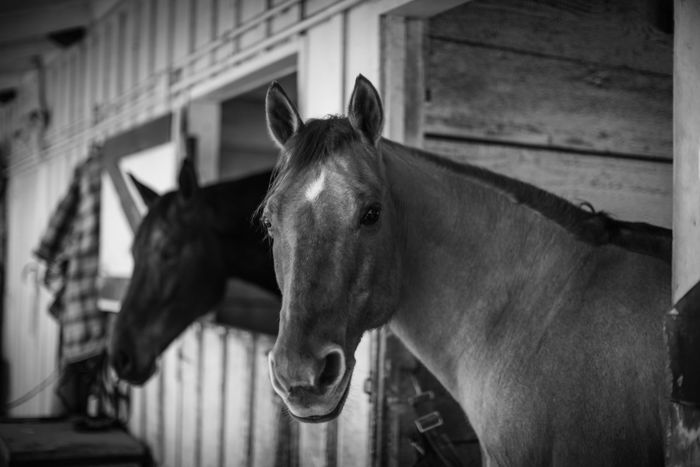
11. Learn How to Direct Horses
Effective communication and direction are essential for successful photo sessions with horses. Due to their massive size and location limitations, there may be complex shooting situations.
Communicating with the horse’s handler and having some direction tips up your sleeve will work wonders. If taking a posed horse photo, be clear on where you want the animal to stand or look. Pay close attention to lighting and compositional elements.
Coordinate with the handler to position the horse effectively. Use techniques like distraction to achieve desired expressions and movements. Having an assistant distract the horse into looking in the proper direction is also a good idea.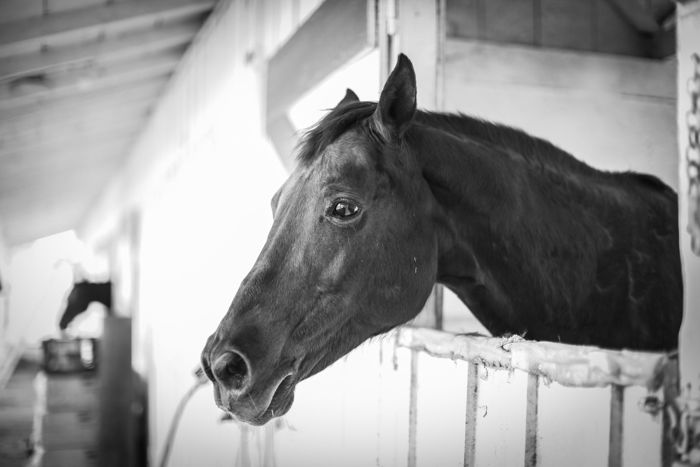
12. Capture Horses in Action
Incorporate action shots to explore the dynamic energy of horses in motion. Whether galloping in a field or performing in a show ring, showcase the horse’s agility and strength.
An obvious place to shoot action shots of horses is at a show or a competition. But you can also capture some motion during an average riding lesson.
These animals have graceful and muscular bodies that you can show in your photography. It would be best to stand further away so you have some space in your frame for the movement. Ask the rider to do some galloping while you take photos.
Horses usually prefer to move toward the paddock’s entrance as that is their way “home.” Suppose you want to take shots where the horse moves or canters alone. It’s easier to make it move from the other end of the paddock toward the entrance.
This setup is also fairly easy for the owner. The owner should bring the animal to the best starting position, with some space to run toward the arrival point.
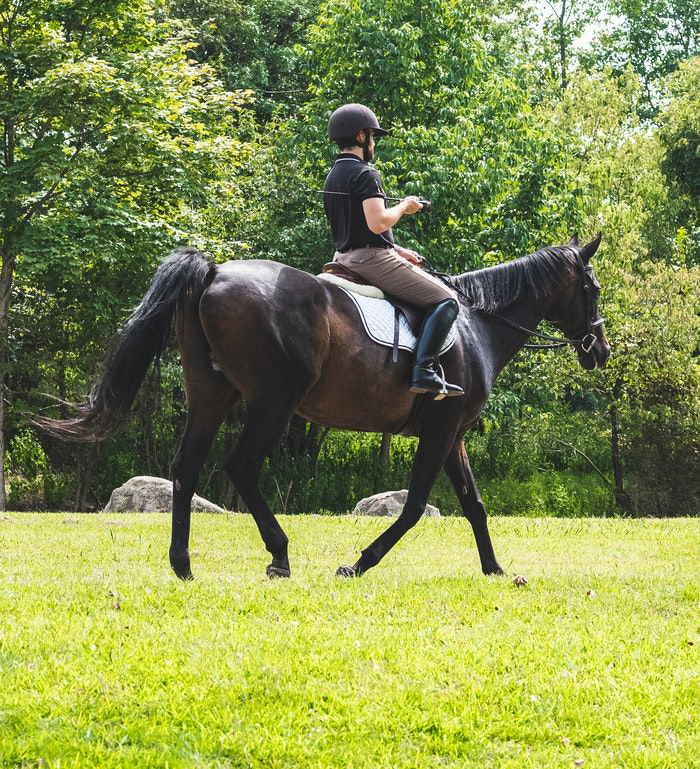
13. Portray Intimacy With Riders
Capture the special bond between horses and their riders by documenting moments of intimacy and connection. Owners and riders get very close to the horses. They form a deep bond and, in a sense, become “partners.”
Capture those moments when the rider and the animal share this intimacy. It can be after a riding session or during cleaning. Take some portrait photographs to highlight their connection.
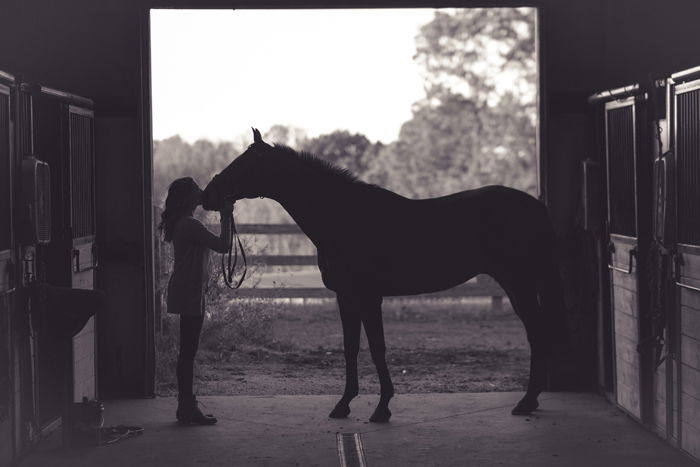
It can be a quiet grooming moment or a shared snack between sessions. These snapshots offer a glimpse into heartfelt relationships forged between humans and horses.
Ensure you are “invisible” so you don’t bother their interaction. It shouldn’t look too artificial and cheesy. A look, a touch, or a whisper in the animal’s ear says enough.
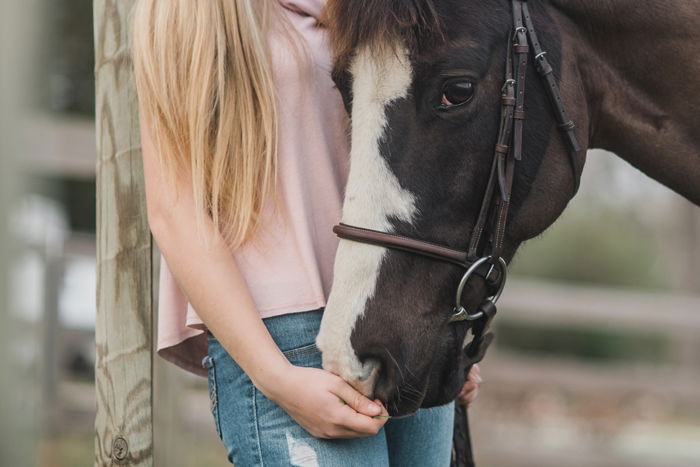
14. Coordinate Styles With Riders
Everyone knows that dogs tend to look like their owners. You can create the same impression of horses, too. Coordinate the attire and accessories of riders with their equine companions. This styling will enhance visual cohesion in your horse photos.
By mirroring colors and patterns, you can create a sense of harmony and unity between horse and rider. This matching will elevate the overall aesthetic of your horse photography.
You don’t need to find a perfect style match. Ask the rider to wear clothes or accessories with colors that match the animal or its equipment.
If the horse is calm and the rider agrees, get them a matching braid. This hair styling will make it obvious where the expression “ponytail” comes from. You don’t want to make the animal look ridiculous, so use simple decor on the saddle or bridle.
If you want and the rider is up for it, you can give the animal a carrot, and the rider can have one, too. Capture them while they are both having a snack!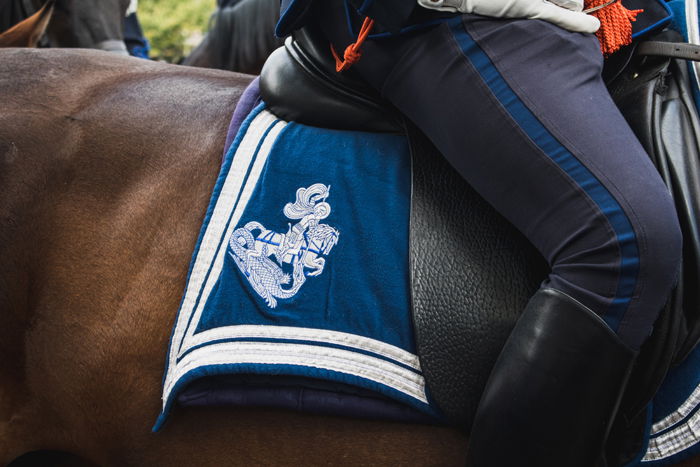
15. Showcase the Horse’s Character and Personality
Finally, remember to capture your equine subjects’ personalities and quirks. Candid shots can reveal their playful antics or gentle demeanor. These images add depth and authenticity to your portfolio. These pictures let viewers connect more emotionally.
Don’t put your camera down immediately after taking a majestic shot. Keep it up if the horse engages with you or the owner in a cute or silly way. This readiness will help you capture those more decisive moments.
Conclusion: Horse Photography
Like other pet photography, horse photography requires technical skill and artistic vision. But it also involves a deep appreciation for these magnificent animals.
Horses are some of the most beautiful animals in the world. They have majestic movements and a graceful presence. As such, these magnificent beasts make lovely subjects for photographers.
Practice the tips outlined above to capture horses’ timeless beauty and allure. You will elevate your equine photography and take stunning images. Whether you’re a seasoned professional or just starting, your photography will improve in no time!
[short_roundup products= “44126,50521,9406” title= “Recommended Cameras for Horse Photography” tag=” eproundupshort-20″]
